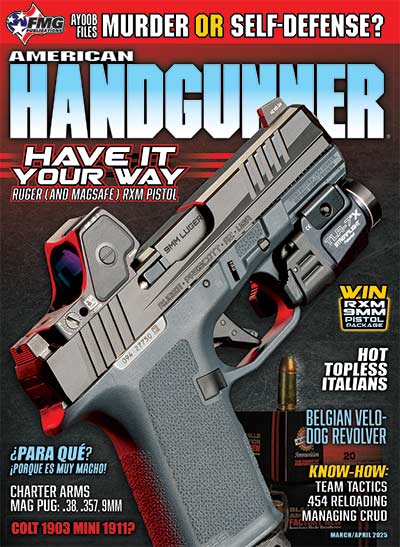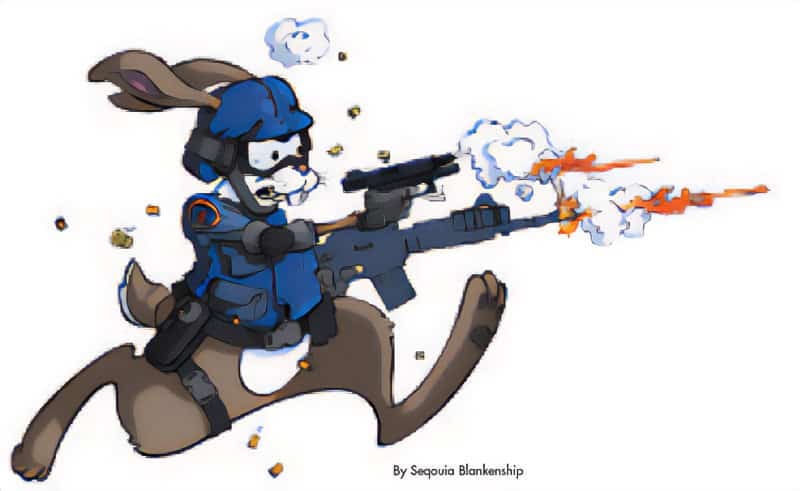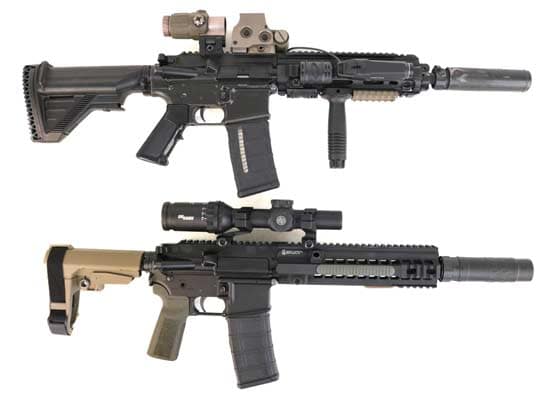¿Para Qué? ¡Por Qué Es Muy Macho!
Big Bore Blowback Pistols
On the surface, the Hi Point C-9 pistol and the Spanish Astra 400/M1921 pistol don’t seem to have much in common other than being single-action autoloaders chambered for a potent 9mm cartridge and using a single stack magazine. The Hi-Point is 9x19mm, has a polymer frame and a cast Zamak (zinc) alloy slide that’s painted black. The Astra is all steel, beautifully made, rust blued, and chambered in a comparably powered but long obsolete 9x23mm Largo caliber.
These two pistol families share the distinction of being the most successful big bore, blowback operated autoloaders ever produced. Production numbers for the Hi-Point pistols, made in full size and compact models chambered in 9mm, .40 S&W and .45 ACP, exceed a million. The Astra family is a distant second by comparison, with about 106,000 Model 400 pistols in 9x23mm Largo, 59,000 Model 600/43 pistols in 9 x 19mm and another 11,400 commercial Model 800 Condor pistols in 9 x 19mm made from 1957 through 1968.
Aside from the Hi-Point and Astras mentioned above, there are five more large caliber, simple blowback, pistols that also enjoyed some military and commercial success, four introduced in the 1920s and one in 1970.
Campo Giro
The first two were the Model 1913 and revised Model 1913-16 Campo Giro pistols designed by retired Spanish Army Lieutenant Colonel Don Venancio López de Ceballos y Aguirre, third Count of Campo-Giro, and chambered in the potent 9x23mm Bergman & Bayard cartridge. Adopted by the Spanish Army, the Campo-Giro pistols had three things going for them that the Spanish liked: They worked, the simple blowback design was easier and less expensive for them to manufacture with their domestic industrial capabilities, and they were designed by a Spaniard. The Campo-Giro pistols emerged at a time when most of Spain’s gun industry was tied up making Ruby-style pistols for the French military fighting on the Western Front. Production of the Model 1913 likely didn’t exceed 1,400 guns.
Approximately 13,700 of the simplified Model 1913–16 were made after France’s World War I needs were met and served Spanish troops until the Astra 400/Model of 1921 replaced it as the standard military sidearm. The Campo-Giro laid the foundation for the rise of Astra as a major Spanish arms maker and was the technological antecedent of all their tubular slide, blowback, pistols that followed (Astra 300, 400, 600, and 800).
JO-LO-AR Pistol
The JO-LO-AR pistol introduced in 1924 and manufactured by STAR Bonifacio Echeverria S.A. was another Spanish designed and built big bore blowback autoloader that enjoyed some success in the civilian and police markets in Spain, Peru and Portugal. Inventor Lopez de Arnaiz conceived the pistol for easy one-handed operation and they had distinctive spur triggers and a long cocking lever along the side of the slide. The design was sturdy enough to handle both 9mm Largo and .45 ACP chamberings.
The French Le Francaise
The French designed and manufactured Le Francaise line of blowback pistols are most noteworthy for their double-action only trigger mechanism, and perhaps also that they only seem to appeal to the French. The Le Francaise Model 1928, introduced in that year and produced until 1938, was chambered in 9mm Browning Long caliber in hopes of selling it to the French military. Due to limitations of design, the pistol lacked the strength to handle the 9x19mm cartridge. The 9mm Browning Long was developed in 1903 for military use in blowback operated Browning patent pistols. Being essentially a comparatively low-powered blowback more than decade behind the times, the Le Francaise 1928 didn’t impress the French military. The civilian market didn’t seem to have much use for it either. It never attained the level of popularity that .25 and .32 ACP Le Francaise pistols did. An estimated 4,000 were made. Since blowback operation is considered acceptable for any caliber below 9x19mm in power, a good argument can be made to exclude the Le Francaise 1928 from the category of successful big bore blowback autoloaders.
H&K VP70
One might also argue that the 9 x 19mm Heckler and Koch VP70 series of pistols made from 1970 to 1989 should be excluded from the successful big-bore blowback pistol category because it was originally conceived as machine-pistol rather than a handgun. The VP stood for Volks Pistol (people’s pistol) and it was a product of Cold War fears of a Soviet invasion of Western Europe. It used a submachine gun-like, double column, dual-feed, magazine of 18-round capacity, and had a buttstock/holster that gave it three-round burst capability when attached! Sales of the select-fire version were limited to around 3,000 but the semi-auto pistol version proved more popular, I suspect this was more because of its science-fiction appearance than its shooting characteristics. Over 23,000 semi-auto handguns were sold worldwide. Of its many unique design features, the VP70 barrel was rifled with exceptionally deep grooves specifically to reduce chamber pressure and slide velocity by allowing gas to vent past the bullet while it was traveling down the bore. The trade-off for less wear and tear on the gun was a loss of velocity.
Hi-Point
To circle back to where we started, the real breakthrough for the big bore blowback pistols came in 1993 when Tom Deeb of Hi-Point Firearms introduced his first pistols. Seeing the rising cost of guns, he decided to design a reliable handgun for the civilian market that everyone could afford. Like many before him, he chose the blowback action because of its mechanical simplicity. Reliability at a low price point was the key to the success of his pistols.
By using heavy zinc alloy and light polymer castings, he was able to drastically cut production costs in a way that wasn’t possible in earlier times.
Bulky, heavy and ugly, his guns also were inexpensive and reliable. In the civilian market, the Hi-Point pistol’s unusually large size and weight were not the deal-breakers they would be for military and law enforcement customers.
Acknowledging that the blowback pistol’s mechanical simplicity allows lower manufacturing costs, there is a serious downside to stretching the limits of the operating system with powerful chamberings of 9x19mm and above. Two undesirable characteristics of big bore blowback pistols are that they have heavier slides and a sharper recoil impulse than locked breech action guns do, and they have heavier than average recoil springs and require more, often much more, physical strength to rack the slide.
I think it’s significant that Spain was the wellspring of so many successful big-bore, blowback-operated pistols in the early 20th century. I have to wonder if, on some level deeply embedded in their national self-image, they didn’t think at the time that locked-action, recoil-operated pistols, with their easy-to-rack slides, were a bit unmanly. Consider that the Spanish Foreign Legion, the aspirational model of toughness for all Spanish soldiers, wears a shirt that doesn’t even have a collar button because it’s meant to expose the chest. They’ve been wearing the same uniform since the 1920s. These Spaniards are not the type of men troubled by sharp recoil and stiff springs.













